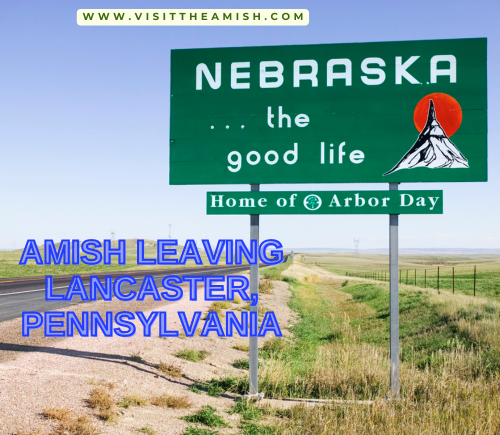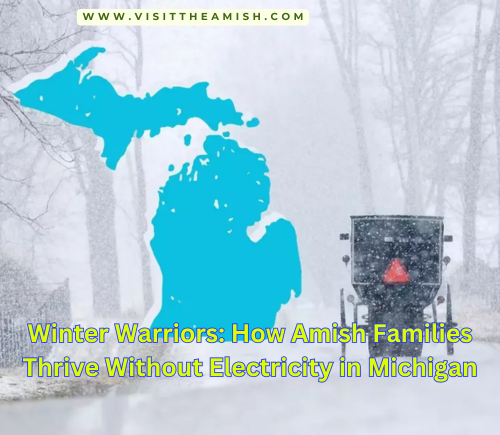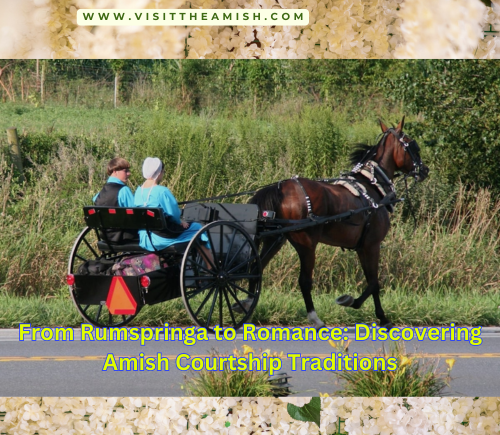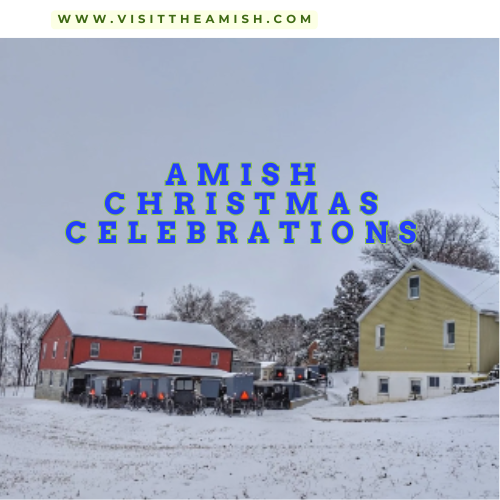Amish Community’s Great Migration: From Lancaster to Nebraska’s Heartland
In an unprecedented move that has sent ripples through both Amish and English communities alike, a significant portion of Lancaster County’s Old Order Amish population has announced plans to relocate to rural Nebraska. This decision, rooted in a complex web of cultural preservation, economic opportunity, and regulatory challenges, marks a historic shift for one of America’s oldest and largest Amish settlements.
The Stoltzfus family, longtime residents of Lancaster County, are among those preparing for the arduous journey westward. Eli Stoltzfus, 45, a respected elder in the community, explained the motivation behind this drastic decision. “We seek only to live as our forefathers did, in harmony with the land and our beliefs,” Stoltzfus said, his weathered hands clasped tightly as he spoke. “But each year, it becomes more challenging to maintain our way of life here in Lancaster.”
At the heart of the conflict lies a series of local government ordinances that the Amish community feels infringe upon their traditional practices. One such regulation, passed last year, requires all horse-drawn buggies to be equipped with electric lights and reflective tape, a move aimed at improving road safety but viewed by many Amish as an unacceptable encroachment of modern technology into their lives.
Sarah Lapp, 38, a mother of six and skilled quilter, expressed her concerns about the changing landscape of Lancaster County. “Our children are growing up in a world that’s becoming harder to shield from outside influences,” Lapp said, her eyes misting as she gazed across her family’s farmland. “In Nebraska, we hope to find the space and freedom to live according to our beliefs without constant pressure to change.”
The decision to relocate to Nebraska was not made lightly. A committee of elders, including Stoltzfus, spent months researching potential locations that could accommodate their community’s needs. They eventually settled on a stretch of land in Howard County, Nebraska, approximately 150 miles west of Omaha.
Howard County, with its vast open spaces and fertile soil, presents an attractive option for the Amish families seeking to establish new roots. The county’s population of just over 6,000 residents is spread across nearly 570 square miles, offering the kind of rural isolation that many in the Amish community crave. The small town of St. Paul, the county seat, has expressed cautious optimism about the potential influx of new residents.
Mayor John Bergman of St. Paul commented on the proposed migration, stating, “While we certainly have questions about how this will impact our community, we’re open to welcoming new neighbors who share our values of hard work and family.” Bergman emphasized that the town council is working to ensure a smooth transition, should the Amish families decide to make Howard County their new home.
The economic implications of this move are significant for both Lancaster County and Howard County. In Lancaster, the Amish community has long been a cornerstone of the local economy, contributing through agriculture, craftsmanship, and tourism. The exodus of several hundred families could have a noticeable impact on local businesses and the county’s famous farmer’s markets.
Conversely, Howard County sees potential economic benefits from the arrival of the Amish. County Commissioner Lisa Hoffman noted, “The Amish are known for their agricultural expertise and craftsmanship. Their presence could revitalize some of our struggling rural areas and bring new skills to our community.”
However, the path to relocation is not without its challenges. The logistics of moving hundreds of families, along with their livestock and equipment, over a distance of more than 1,200 miles presents a daunting task. The community plans to make the journey in stages, with advance teams preparing land and temporary housing in Nebraska before the main groups arrive.
Adding to the complexity are the legal and regulatory hurdles that must be navigated. While Nebraska generally has fewer restrictions on Amish practices than Pennsylvania, the community will still need to work with local authorities to ensure compliance with state laws while preserving their traditional way of life.

One area of potential conflict is education. The Amish typically educate their children in one-room schoolhouses only through the eighth grade, a practice that has been accepted in Lancaster County for generations. Nebraska law, however, requires schooling through age 18 or until high school graduation. Negotiations are underway to find a compromise that respects both Amish traditions and state educational requirements.
Despite these challenges, many in the Amish community see the move as an opportunity for renewal. Jacob Yoder, 52, a skilled carpenter and father of eight, spoke of the possibilities that await in Nebraska. “We do not embrace change lightly,” Yoder said, his eyes bright with anticipation. “But sometimes, to preserve what is most important, we must be willing to leave the familiar behind. In Nebraska, we see a chance to build a community that can thrive for generations to come.”
The impact of this migration extends beyond the Amish community itself. In Lancaster County, local businesses that have long catered to Amish needs are bracing for a potential downturn. Mary Hershey, owner of a fabric store in Intercourse, PA, expressed her concerns: “The Amish are not just our customers; they’re our neighbors and friends. Their leaving will leave a void that’s hard to fill.”
Tourism, a significant industry in Lancaster County, may also feel the effects of the Amish exodus. The county’s Amish population has long been a draw for visitors seeking to experience a glimpse of a simpler way of life. Local tourism officials are already strategizing on how to adapt their marketing to reflect the changing demographics of the area.

In Nebraska, preparations are underway to welcome the new arrivals. Local farmers have reached out to offer assistance and advice on adapting to the region’s climate and soil conditions, which differ significantly from those in Pennsylvania. Howard County’s agricultural extension office is developing resources to help the Amish families transition their farming practices to suit the local environment.
The move has also sparked interest from other Amish communities across the United States. Representatives from settlements in Ohio, Indiana, and Wisconsin have visited both Lancaster County and Howard County to observe the process, potentially considering similar relocations in the future.
As news of the impending migration spreads, it has reignited national discussions about religious freedom, cultural preservation, and the changing face of rural America. Sociologists and historians are watching closely, recognizing the potential historical significance of this modern-day exodus.
Dr. Emily Thornton, a professor of American Studies at Franklin and Marshall College in Lancaster, offered her perspective: “What we’re witnessing is a continuation of the Amish story in America – a story of seeking a place to practice their faith freely. It’s a reminder that even in our rapidly changing world, there are communities dedicated to maintaining their traditional ways of life.”
The first group of families is scheduled to depart for Nebraska in the spring, timing their arrival to coincide with the planting season. As they prepare for this monumental change, the Amish community remains focused on their core values of faith, family, and simplicity.

Eli Stoltzfus, looking out over the Lancaster County farmland that has been home to his family for generations, summed up the community’s resolve: “We go forth with heavy hearts but strong spirits. Our roots may be in this soil, but our foundation is in our faith and our way of life. That we carry with us, wherever we may go.”
As the sun sets over the rolling hills of Lancaster County, casting long shadows across the patchwork of farms and fields, there’s a sense of both ending and beginning. The Amish community’s journey to Nebraska represents more than just a physical relocation; it’s a testament to their unwavering commitment to preserving a way of life in an ever-changing world.
The coming months will undoubtedly bring challenges and adjustments for both the departing Amish families and the communities they leave behind and join anew. Yet, as they have done for centuries, the Amish face this new chapter with quiet determination, their faith and traditions serving as a compass guiding them towards an uncertain but hopeful future in the heartland of America.
Citations:
[1] https://www.amishvillage.com/about-amish-village/lancaster-amish/
[2] https://datausa.io/profile/geo/lancaster-county-pa
[3] https://goamish.co/blogs/news/the-history-of-the-amish-community-in-lancaster-county-pennsylvania
[4] https://www.discoverlancaster.com/amish/
[5] https://datausa.io/profile/geo/lancaster-pa/
[6] https://www.discoverlancaster.com/amish/history-beliefs/
[7] https://lancasterindicators.com/demographics/population-by-race-ethnicity
[8] https://lancasterpa.com/things-to-do/amish-attractions/
[9] https://en.wikipedia.org/wiki/Lancaster,_Pennsylvania


























